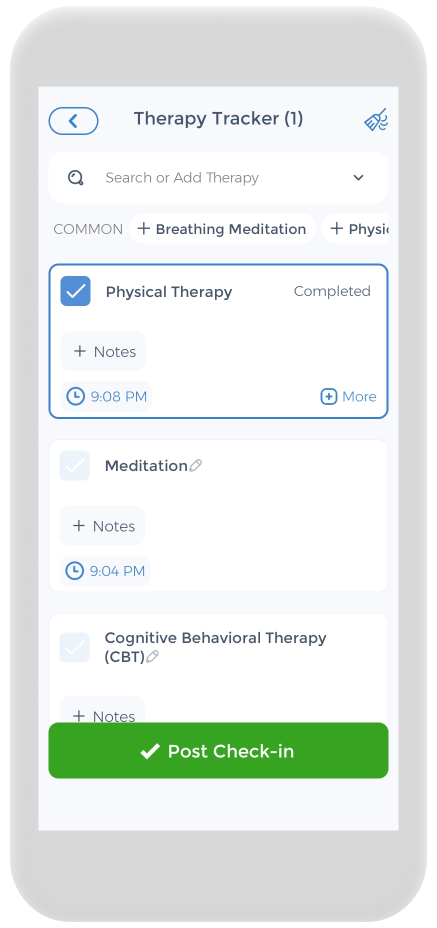 In certain situations, individuals may wonder if it is safe to take oxycodone, a powerful opioid pain reliever, in combination with ibuprofen, a widely used nonsteroidal anti-inflammatory drug (NSAID). While it is important to consult with a healthcare professional before making any medication decisions, this article aims to provide a comprehensive overview of oxycodone, and ibuprofen, their effects on the body, potential interactions, expert opinions, real-life experiences, and alternatives to combining these medications.[1]
In certain situations, individuals may wonder if it is safe to take oxycodone, a powerful opioid pain reliever, in combination with ibuprofen, a widely used nonsteroidal anti-inflammatory drug (NSAID). While it is important to consult with a healthcare professional before making any medication decisions, this article aims to provide a comprehensive overview of oxycodone, and ibuprofen, their effects on the body, potential interactions, expert opinions, real-life experiences, and alternatives to combining these medications.[1]
Understanding Oxycodone and Ibuprofen
What is Oxycodone?
![]() Oxycodone is a prescription opioid medication primarily used to manage moderate to severe pain through analgesic effects. It belongs to the class of drugs known as narcotic analgesics and is available in various formulations, including immediate-release and extended-release versions.
Oxycodone is a prescription opioid medication primarily used to manage moderate to severe pain through analgesic effects. It belongs to the class of drugs known as narcotic analgesics and is available in various formulations, including immediate-release and extended-release versions.
As an opioid, oxycodone binds to specific receptors in the brain and spinal cord, altering the perception of pain and producing a sense of euphoria or relaxation. It also depresses the central nervous system, slowing down vital functions like heart rate and respiration.
Oxycodone is commonly prescribed for conditions such as post-surgical pain (dental surgery, emergency treatment), cancer-related pain, and chronic pain that cannot be effectively managed with non-opioid medications.
It is important to note that oxycodone carries a risk of addiction and misuse. Due to its potential for abuse, it is classified as a Schedule II controlled substance by the Drug Enforcement Administration (DEA). This means that it has a high potential for abuse, may lead to severe psychological or physical dependence, and is regulated by strict prescribing guidelines.
What is Ibuprofen?
Ibuprofen, on the other hand, is an NSAID that is widely available over-the-counter and in prescription![]() strengths. It is commonly used to relieve pain, reduce inflammation, and alleviate fever.
strengths. It is commonly used to relieve pain, reduce inflammation, and alleviate fever.
As an NSAID, ibuprofen works by inhibiting the production of certain chemicals called prostaglandins, which are involved in inflammation and pain signaling. By reducing the levels of prostaglandins, ibuprofen can help decrease pain and swelling.
Ibuprofen is often recommended for conditions such as migraine headaches, menstrual cramps, muscle aches, and minor injuries. It can also be used to manage chronic conditions like arthritis.
Unlike opioids, ibuprofen does not carry the same risk of addiction or dependence. However, it is important to use ibuprofen as directed and not exceed the recommended dosage, as long-term or excessive use can lead to gastrointestinal problems, kidney damage by affecting renal blood flow, and other side effects.
It is worth noting that while both oxycodone and ibuprofen can help alleviate pain, they work through different mechanisms and have distinct side effect profiles. The choice between these medications depends on the severity and nature of the pain, as well as individual patient factors and medical history.[2][3][4]
The Effects of Oxycodone and Ibuprofen
The Impact of Oxycodone on the Body
When taken as prescribed, oxycodone can provide effective pain relief for individuals dealing with acute or chronic pain conditions. It binds to opioid receptors in the body, primarily in the brain and spinal cord, altering the way pain signals are transmitted and perceived.
However, it is essential to note that oxycodone, like other opioids, carries a risk of potential side effects. Common side effects include constipation, drowsiness, nausea, dizziness, respiratory depression, and other central nervous system problems. These side effects can vary depending on the individual and the dosage taken.
In addition to its pain-relieving properties, oxycodone also has the potential for misuse and addiction. It is classified as a Schedule II controlled substance due to its high potential for abuse. Prolonged use or misuse of oxycodone can lead to physical dependence and withdrawal symptoms when discontinuing its use.
Furthermore, combining oxycodone with other substances, such as alcohol or benzodiazepines, can increase the risk of respiratory depression and overdose. It is crucial to follow the prescribed dosage and consult with a healthcare professional to minimize these risks.
The Impact of Ibuprofen on the Body
Ibuprofen, as a nonsteroidal anti-inflammatory drug (NSAID), primarily targets the prostaglandin pathway in the body. By inhibiting the production of certain prostaglandins, it can help reduce pain, inflammation, and fever.
While generally well-tolerated, ibuprofen is not without its potential side effects. These can include gastrointestinal upset (stomach problems), heartburn, stomach ulcers, kidney problems, and an increased risk of cardiovascular events, particularly at higher doses or with prolonged use.
It is important to note that ibuprofen should be used cautiously in individuals with pre-existing conditions such as stomach problems, peptic ulcers, kidney disease, or cardiovascular disease. Long-term use of high doses of ibuprofen can lead to adverse effects on the gastrointestinal system, including bleeding and ulceration.
Additionally, ibuprofen may interact with other medications, such as blood-thinning drugs or certain antidepressants. It is crucial to inform healthcare professionals about all medications being taken to prevent potential drug interactions.
Despite these potential risks, ibuprofen is a widely used over-the-counter medication for pain relief and inflammation. It is important to follow the recommended dosage and duration of use to minimize the likelihood of experiencing adverse effects.[5][6]
Possible Interactions Between Oxycodone and Ibuprofen
Risks of Combining Oxycodone and Ibuprofen
Combining oxycodone and ibuprofen can potentially increase the risks associated with each medication. Both drugs can cause gastrointestinal irritation and increase the likelihood of stomach ulcers and bleeding when used together.
When taken separately, oxycodone and ibuprofen have been known to cause gastrointestinal side effects. However, when combined, the risk of these side effects becomes even greater. The delicate lining of the stomach can become irritated and inflamed, leading to the formation of ulcers. In severe cases, these ulcers can bleed, causing further complications and potentially leading to life-threatening situations.
Furthermore, combining opioids with NSAIDs can potentially potentiate the risk of respiratory depression, which can be life-threatening. This risk is particularly important in individuals who are already susceptible, such as those with pre-existing respiratory conditions or the elderly.
Respiratory depression occurs when the central nervous system is suppressed, causing a decrease in the rate and depth of breathing. When oxycodone and ibuprofen are taken together, the risk of respiratory depression increases. This is because both medications can depress the central nervous system, and when combined, their effects can be additive. Individuals who already have compromised respiratory function, such as those with asthma or chronic obstructive pulmonary disease (COPD), are at an increased risk of experiencing respiratory depression when taking these medications together.
Potential Benefits of Combining Oxycodone and Ibuprofen
A healthcare professional may consider combining oxycodone and ibuprofen in specific cases where the benefits outweigh the potential risks. This may be particularly relevant for individuals with severe pain that is not adequately controlled by either medication alone.
While there are significant risks associated with combining oxycodone and ibuprofen, there are also potential benefits that may outweigh these risks in certain situations. For individuals experiencing severe pain that is not effectively managed by either medication alone, combining the two may provide a synergistic effect.
The combination of oxycodone and ibuprofen can potentially provide a synergistic effect, with the opioid targeting the central perception of pain, while the NSAID works to reduce inflammation surrounding the site of pain. This dual mechanism of action can lead to more effective pain relief, allowing individuals to experience improved quality of life and functionality.
It is important to note that the decision to combine oxycodone and ibuprofen should always be made by a healthcare professional. They will carefully assess the individual’s medical history, current medications, and overall health status to determine the appropriate course of treatment. Close monitoring and regular follow-ups are necessary to ensure that the benefits outweigh the potential risks and that any adverse effects are promptly addressed.[7][8]
Medical Expert Opinions on Combining Oxycodone and Ibuprofen
When is it Safe to Combine These Medications?
Medical experts generally advise caution when considering the combination of oxycodone and ibuprofen. It is crucial to consult with a healthcare professional who can evaluate individual circumstances, including medical history, current medications, and specific pain management needs.
When determining the safety of combining oxycodone and ibuprofen, healthcare professionals take into account various factors. These factors include the severity of the pain being experienced, the duration of treatment, and the potential benefits versus the increased risk of the combination.
For short-term pain management, some medical professionals may recommend a carefully monitored combination regimen. This approach involves closely monitoring the patient’s response to the medications and adjusting the dosage as needed. By combining these medications, patients may experience enhanced pain relief due to the different mechanisms of action of oxycodone and ibuprofen.
However, it is important to note that not all medical professionals agree on the safety and efficacy of combining these medications. Some healthcare providers may prefer alternative treatment options to minimize potential risks. These alternatives may include non-opioid pain relievers or physical therapy.
When Should These Medications be Avoided?
In certain situations, it may be best to avoid combining oxycodone and ibuprofen altogether. This can include individuals with a history of gastrointestinal bleeding, ulcers, kidney problems, or liver disease, as both medications can exacerbate these conditions. Furthermore, elderly patients should be careful.
Individuals with a history of opioid or nonsteroidal anti-inflammatory drug (NSAID) misuse or dependence may also be advised against combining these medications. The combination of oxycodone and ibuprofen can increase the risk of dependence, addiction, and other adverse effects in these individuals.
Furthermore, certain medical conditions may contraindicate the combination of oxycodone and ibuprofen. These conditions can include liver disease, heart disease, high blood pressure, and asthma. It is crucial for healthcare professionals to carefully evaluate the individual’s medical history and consider potential drug interactions before recommending or prescribing these medications together.
It is important to remember that the information provided here is for informational purposes only and should not replace the advice of a healthcare professional. Always consult with a qualified healthcare provider to discuss the appropriate treatment options for your specific needs.[9]
Alternatives to Combining Oxycodone and Ibuprofen
Other Pain Management Options
In cases where the combination of oxycodone and ibuprofen is deemed too risky or ineffective, there are alternative pain management options to explore. These can include other opioid analgesics, different classes of pain medications, physical therapy, and non-pharmacological approaches such as acupuncture or cognitive-behavioral therapy.
When it comes to pain management, it is crucial to have a comprehensive understanding of the available options. Opioid analgesics, such as hydrocodone or morphine, can be considered as alternatives to oxycodone. These medications work by binding to opioid receptors in the brain, reducing the perception of pain. However, they also come with their own set of risks and potential side effects, including the increased risk of dependence and respiratory depression.
Alternatively, different classes of pain medications can be explored. Nonsteroidal anti-inflammatory drugs (NSAIDs), such as naproxen or diclofenac, can provide relief by reducing inflammation and pain. These medications work differently from opioids and can be effective in managing certain types of pain, such as arthritis or musculoskeletal pain.
Physical therapy is another viable option for pain management. This approach involves exercises and techniques that aim to improve mobility, strength, and flexibility. Physical therapists can tailor treatment plans to target specific areas of pain and help individuals regain function and reduce discomfort. Additionally, physical therapy can also help prevent future injuries and promote overall well-being.
Non-Pharmacological Approaches to Pain Management
Non-pharmacological approaches to pain management can be valuable in reducing reliance on medications and minimizing potential side effects. These can include exercise, relaxation techniques, hot and cold therapy, transcutaneous electrical nerve stimulation (TENS), and complementary therapies.
medications and minimizing potential side effects. These can include exercise, relaxation techniques, hot and cold therapy, transcutaneous electrical nerve stimulation (TENS), and complementary therapies.
Exercise is a powerful tool in pain management. Engaging in regular physical activity can help strengthen muscles, improve flexibility, and release endorphins, which are natural pain-relieving chemicals in the body. Whether it’s low-impact activities like walking or swimming, or more intense exercises like weightlifting or yoga, finding a form of exercise that suits individual preferences and abilities can contribute to pain reduction and overall well-being.
Relaxation techniques, such as deep breathing exercises, meditation, or guided imagery, can help relax the mind and body, reducing stress and tension that can exacerbate pain. These techniques can be practiced independently or with the guidance of a trained professional, providing individuals with a sense of control over their pain and promoting relaxation and calmness.
Hot and cold therapy is another non-pharmacological approach that can provide relief for certain types of pain. Applying heat, such as a warm compress or a heating pad, can help relax muscles and increase blood flow to the affected area, reducing stiffness and promoting healing. On the other hand, cold therapy, such as applying ice packs or using cold sprays, can help numb the area, reduce inflammation, and alleviate acute pain.
Using the CareClinic App to Manage Pain
Maintaining a pain journal is beneficial to your health, and the CareClinic app can help you do so. The app also functions as a clinical and health journal. Simply record your daily symptoms, medications, and triggers in the app’s pain journal. Other software components are dedicated to tracking each of these. This can help you recognize early warning signs. The app is meant to help you improve your chronic lower back pain and acute pain-related health if you have chronic lower back pain, neck discomfort, acute injuries or traumatic injuries, common knee injuries, autoimmune disease, acute inflammation, meniscus tear, or reactive arthritis.
Sources
- https://www.ninds.nih.gov/health-information/disorders/pain
- https://painbc.ca/health-professionals/education/OT-workshop
References
- “Single dose oral ibuprofen plus oxycodone for acute postoperative pain | Cochrane”. https://www.cochrane.org/CD010289/SYMPT_single-dose-oral-ibuprofen-plus-oxycodone-acute-postoperative-pain
- “Oxycodone – StatPearls – NCBI Bookshelf”. https://www.ncbi.nlm.nih.gov/books/NBK482226/
- “Ibuprofen – StatPearls – NCBI Bookshelf”. https://www.ncbi.nlm.nih.gov/sites/books/NBK542299/
- “Nonsteroidal Anti-Inflammatory Drugs (NSAIDs) – StatPearls – NCBI Bookshelf”. https://www.ncbi.nlm.nih.gov/books/NBK547742/
- “Oxycodone”. https://en.wikipedia.org/wiki/Oxycodone
- “Ibuprofen – Mechanism, Indication, Contraindications, Dosing, Adverse Effect, Interaction, Renal Dose, Hepatic Dose | Drug Index | Pediatric Oncall”. https://www.pediatriconcall.com/drugs/nsaids/ibuprofen/11/656
- “Combination oxycodone 5 mg/ibuprofen 400 mg for the treatment of postoperative pain: a double-blind, placebo- and active-controlled parallel-group study – PubMed”. https://pubmed.ncbi.nlm.nih.gov/15823764/
- “Oxycodone/Ibuprofen combination tablet: a review of its use in the management of acute pain”. https://pubmed.ncbi.nlm.nih.gov/16266203/
- “Oxycodone and Ibuprofen: Dosage, Mechanism/Onset of Action, Half-Life – Medicine.com”. https://www.medicine.com/drug/oxycodone-ibuprofen/hcp
- “Management of Pain without Medications | Stanford Health Care”. https://stanfordhealthcare.org/medical-conditions/pain/pain/treatments/non-pharmacological-pain-management.html
- “”. https://www.powerpak.com/course/content/119705
- “”. https://www.jointcommission.org/resources/news-and-multimedia/newsletters/newsletters/quick-safety/quick-safety-44-nonpharmacologic-and-nonopioid-solutions-for-pain-management/quick-safety-44-nonpharmacologic-and-nonopioid-solutions-for-pain-management/


